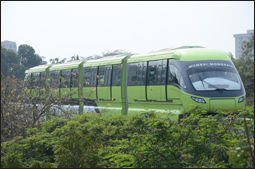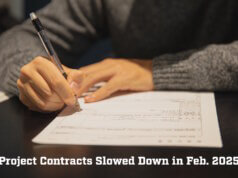
Chief Executive Officer
Scomi Engineering Berhad
Kanesan Veluppillai, Chief Executive Officer, Scomi Engineering Berhad, hopes that the new government will strengthen the existing framework for urban transport, rethink land use to minimise transport demand, promote non-motorised vehicular transport, improve public transport and advance intermediate public transport systems, and introduce policies that are positive and conducive for investment and growth of sustainable PPP-model transport projects in India.
India is rapidly moving towards urbanisation. In the coming decades, the urban sector will play a critical role in the structural transformation of the Indianeconomy and in sustaining the high rates of economic growth. Ensuring high quality public services for all in the cities and towns of India is a must as it will contribute towards the full realisation of India’s economic potential. Urbanisation is growing at a fast pace and the immense scale of this urban demographic shift also means that Indian cities are anticipated to expand physically, by 200 to 400 per cent in area over the next two decades. This spatial expansion is inevitable in any growing economy. And one factor that would be instrumental in facilitating this growth would be Urban Transport.
Thus, with regards to the urban transport system in India, there needs to be a growing emphasis on effective use of demand as well as supply-side management measures of the same. It is important to understand that it requires both an increase in quantity as well as quality of public transport. Therefore, the integration of the various modes of transportation to provide seamless connectivity is the most suitable approach towards increasing the efficiency of the public commuting system in India.
Current scenario
Urban transport systems in India have constantly been trying to keep pace with the rapid rate of urbanisation over the past few decades. However, there has been a significant deficit between supply and demand of transport infrastructure. Additionally, funding has been inadequate. In the present scenario, even if majority of the modes of travel exist in India, there is still a large imbalance in the modal split. About 20-60 per cent of India’s population walk and private cars dominate the urban modes of travel. India cannot focus towards catering only to personal means of transportation, as it would over a period of time prove to be a bottleneck in the infrastructure growth of the nation.
Indian cities are struggling with the increased demand for efficient, fast, sustainable, economical and eco-friendly transport systems. The challenges of the urban sector in India are growing rapidly, and government agencies at various levels are taking steps to address the gaps in service delivery. To enhance the productivity of urban cities, Mass Rapid Transit Systems have come into existence as a viable solution to the prevailing traffic hazards of the country.
The focus primarily has been on developing rail based mass rapid transit system that is capable of serving the bulk of the populace as compared to others. So, several cities across the country have launched heavy rail based mass rapid transit system projects requiring large investments. Several cities are also initiating monorail and light rail systems. According to India Infrastructure Research, investments of over `860 billion have been lined up for heavy rail-based project across the country, of which `550 billion is planned to be mobilized in the next five years.
Challenges
The biggest challenge faced by the urban infrastructure sector is the enormous gaps and bottlenecks in the entire implementation of any plan for urban development including infrastructure requirements. Specifically talking about urban transportation infrastructure, the key implementation issues include financing urban transportation projects, land acquisition and environmental and regulatory impediments.
Financing of infrastructure projects : While government funding for urban infrastructure projects has seen an unprecedented growth over the last few years and continued impetus on funding of planned projects is expected from the government, there still exists a huge gap between requirement and availability.
In recent years, government has sought newer measures to finance the various planned urban infrastructure outlays through coordinated investments by the state and central governments, private funds, international and domestic debt. Efforts have been made by the government to step up investment in infrastructure, and particularly to catalyse greater private investment. As a result of the Planning Commission’s emphasis on funding through private sector, more than a third of the overall expenditure requirement in the urban transportation sector is expected to be met through this new source of financing. This could indicate a greater inclination towards executing projects through the PPP route.
Land acquisition : Land acquisition for infrastructure projects has always been a key challenge in India leading to delays in project execution. Social implications such as population displacement, location of worship places, public sentiments over heritage properties and other social reasons provide constant public resistance and impede progress of a project and its timely completion. A sustainable transport system should co-exist with the need to safeguard the environment. It has, indeed, emerged as the single most important reason for project delays and consequent cost escalation.
The acquisition of land by government using its eminent domain powers has drawn resistance in many cases due to inadequate compensation for the land as well as for involuntary displacement of people and loss of their livelihood. Yet, it is important to strike a balance between the need for land for developmental activities and the need to protect the interests of those impacted by the acquisition of the land.
Environmental and regulatory impediments : Although India has a well-developed legal system, the current legal and regulatory environment sometimes acts as an obstacle to the growth of infrastructure. Major  infrastructure projects are governed by the concession agreements signed between public authorities and private entities. Tariff determination and the setting of performance standards vary somewhat by sector.
infrastructure projects are governed by the concession agreements signed between public authorities and private entities. Tariff determination and the setting of performance standards vary somewhat by sector.
As is the case in many countries, there is no single regulator which formulates the policy for all infrastructure projects. There is also no standardisation in the concession agreements across the different infrastructure sectors. As a result, the development of certain sectors in India may be hampered due to lack of adequate and coordinated planning. Projects which are approved may face difficulties if related projects are substantially delayed.
Policy initiatives
The outgoing government initiated innumerable initiatives to lift the sector from its current dormant conditions. The new government should focus on revising and revitalising Indian cities and towns by interlinking them through multimodal transport systems that aid in overall economic development of the country. We hope that the new government will strengthen the existing framework for urban transport, rethink land use to minimise transport demand, promote non-motorised vehicular transport, improve public transport and advance intermediate public transport systems. We expect impetus on urban transportation through introduction of policies which are positive and conducive for investment and growth of sustainable PPP-model transport projects in India.
All million population-plus cities should put together clear action plans for implementing transport demand management that encourage use of sustainable modes of transport which essentially means modes of transport that have least environmental footprint, is inclusive and which generates economic growth opportunities with minimum environmental and social impacts. It would also help if the government streamlines approval processes by ensuring regular monitoring, follow-up on environmental clearances and compliances during the course of construction and operation of building projects.
As of today, there are only three acts specific to mass rapid transport : The Tramways Act, The Delhi Metro Railway (O&M) Act, 2002 and the Metro Railways (Construction of Works) Act, 1978. In addition, there are several other acts that deal with other transport matters such as The Railways Act, 1989, The Motor Vehicles Act, 1988, The Road Transport Act, 1956, etc. While the number of rules and laws enacted might seem adequate, they are still insufficient. There exists a dire need for a comprehensive legislation covering all aspects of urban transportation.
Whilst the need for greater infrastructure investment is clear, equally important is the need to sustainably manage such investments. The Government’s success in infrastructure provision will be measured not by the quantum of funds invested, but on how infrastructure contributes to the achievement of India’s economic, social and environmental objectives. Importantly, infrastructure investment should be considered as a means to an end, not an end in itself.











